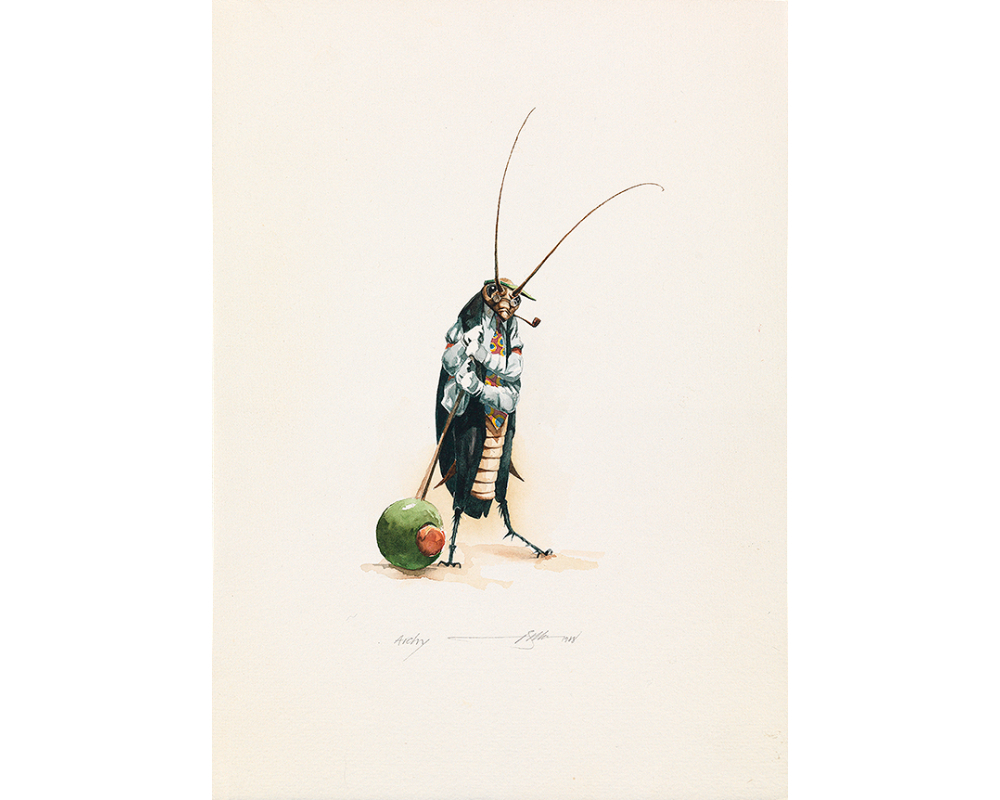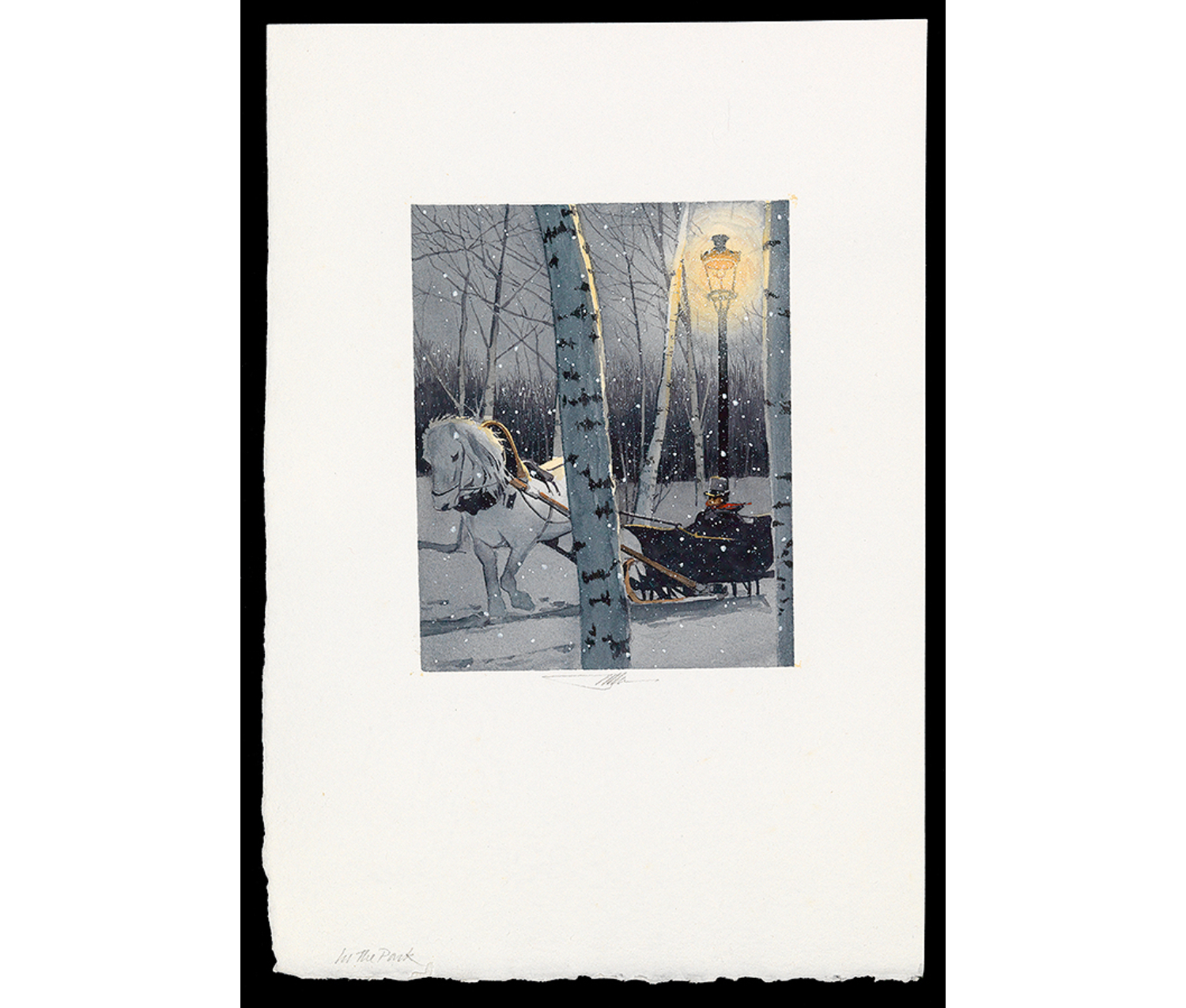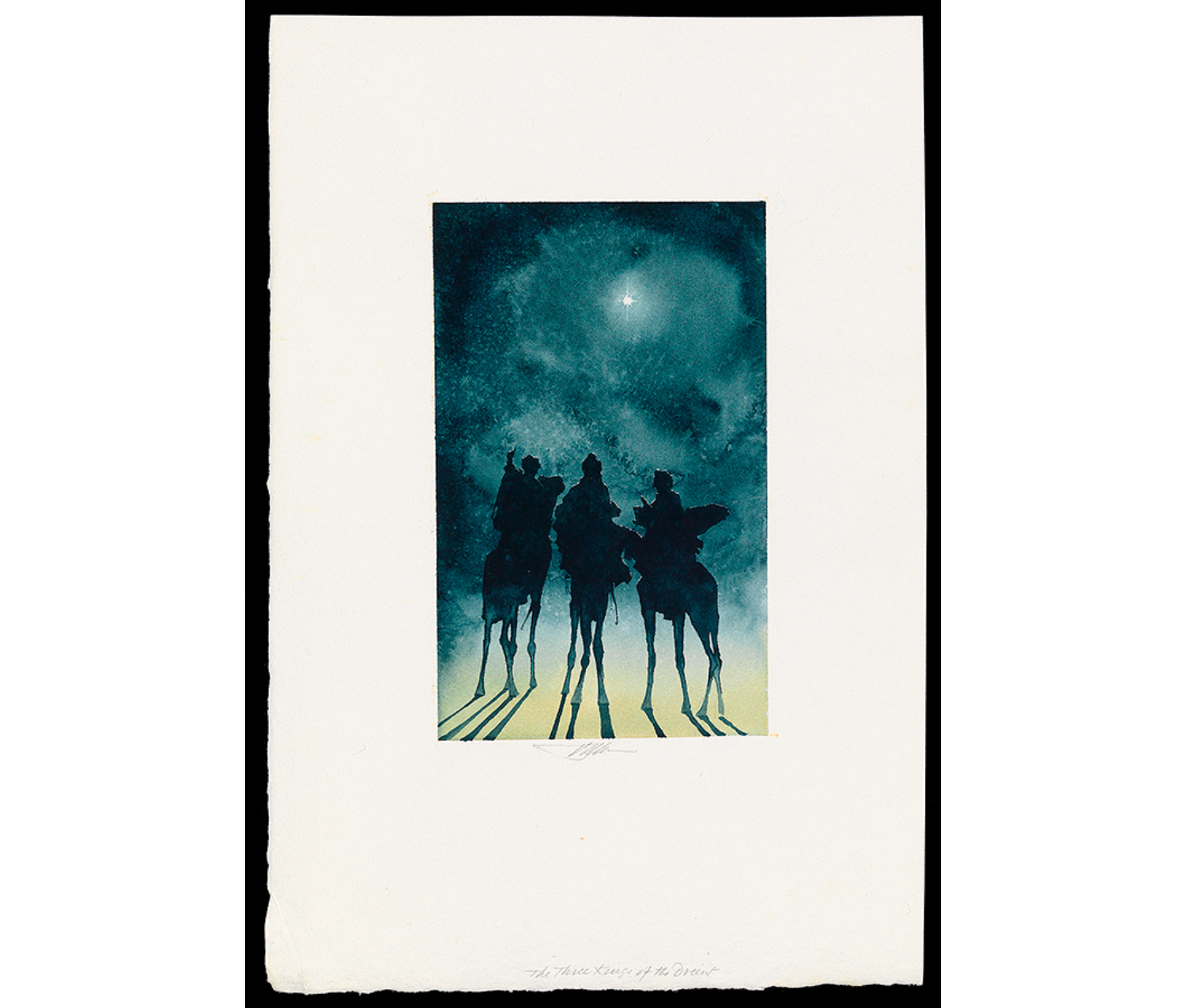
Barry Moser's Watercolor Illustrations
Guest blogger Renee Klann is a Smith College student, class of 2019. She is the 2015-2017 STRIDE Scholar in the Cunningham Center for Prints, Drawings, and Photographs. This post discusses the art of Barry Moser, an printmaker and professor at Smith College. A recent gift of 91 of his works was made to the museum by Jeff Dwyer and Elizabeth O'Grady.
Although Barry Moser primarily works in wood engraving, he has also illustrated numerous books in watercolor. What drew him to such different media? In an interview he said that he enjoys watercolor and wood engraving because “My personality is kind of pig-headed and tenacious, so I like working with materials that are difficult.” Moser was certainly tenacious when learning to paint with watercolor, since he taught himself solely by studying the work of other artists.
Moser often uses watercolor to illustrate books for children. When he accepts an illustration commission, it’s usually expected to be in a particular medium. However, sometimes he debates with a publisher about what medium would be best. The technique of watercolor, which requires painting an image on a blank white sheet, is nearly the opposite of wood engraving, in which every area of white has to be cut from the black background of the inked wood block. Moser has adapted to the difference by taking an unconventional approach to watercolor. He says, “I often start off with the darkest rather than the lighter areas, which is pretty much backwards from what most watercolorists do.” This unique method makes sense in the context of Moser’s experience with wood engraving.
One of Moser’s watercolor illustrations is Archy, a depiction of a character created in 1916 by Don Marquis, a columnist for The Evening Sun newspaper. Archy was a cockroach who had been a free verse poet in a previous life, and he wrote poems and stories on a typewriter at the newspaper office after all the humans had left. His best friend was an alley cat named Mehitabel, and their published adventures included satirical commentaries on everyday life in New York City. Moser painted Archy for an edition of the book Archy and Mehitabel that was never published.
In this humorous image, Archy stands on two legs, wearing a shirt and tie and holding a pipe in his mouth. His anatomy makes him recognizable as a cockroach, while his outfit and pose are human-like. Despite his somewhat irritable expression (and his species’ bad reputation) this portrayal of him is endearing. The medium of watercolor is an ideal match for Archy’s whimsical nature, which Moser captures here.

Barry Moser. American, born 1940. In the Park from Kastanka, 1991. Watercolor on thick, rough, white paper. Gift of Elizabeth O’Grady and Jeffrey P. Dwyer. SC 2014.54.19.
In the Park is a watercolor illustration from Kashtanka, Anton Chekhov’s tale about a lost dog and becomes part of a circus before being reunited with her owner at the end. The image of a sleigh traveling through a snowy forest balances the coolness of the blue-gray trees and sky with the warm glow of the lamp in the background. The trees in the foreground distance viewers from the action of the horse and sleigh, but creates the feeling of being in the forest as well, drawing viewers into the world of the story.

Barry Moser. American, born 1940. Three Kings of the Desert from The Holy Bible, 1990. Watercolor on thick, moderately textured, cream-colored paper. Gift of Elizabeth O’Grady and Jeffrey P. Dwyer. SC 2014.54.64.
Moser painted Three Kings of the Desert for an edition of the Bible published in 1990. It preceded his own 1999 Pennyroyal Caxton Bible, which he designed and illustrated with over 200 wood engraving prints. The three kings riding camels in this image are shown in silhouette, casting shadows on the ground. In addition, the background depicts the night sky in a swirling, textured shade of blue-green, with the Star of Bethlehem standing out clearly against it. The dramatic composition and style of the illustration conveys the sense of awe that the three kings felt on their journey.
Barry Moser’s watercolors range from biblical figures to poetry-writing insects, but they all have styles appropriate to their subjects. Seeing Moser’s watercolors in addition to his wood engravings offers a new perspective on his work as an illustrator, since each medium has different challenges and possibilities.